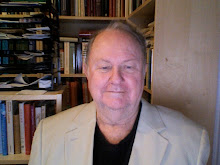Some years ago I noticed that the work of advanced artists of the nineteenth century, including Paul Gauguin, Maurice Denis, and some members of the William Morris circle made selective use of medieval themes and stylistic forms. In addition, there were important paintings of medieval churches by Monet, Van Gogh, Matisse, and Delaunay. Architectural historians have long recognized parallel themes. In fact, I recently published an article on “Le Corbusier and Medievalism.” What is interesting about these examples is the medieval allusions are not merely citational. Rather the artists used the medieval touchstones as devices to aid creative innovation. This innovation was not merely individual, but central to the establishment of a new aesthetic in the visual arts.
The new aesthetic sought to escape from the bonds of the Renaissance tradition with its reliance on perspective, chiaroscuro and cast shadows, features reflecting an overall commitment to idealistic illusionism. For this tyranny of illusionism and fictive depth the pioneering modernists substituted a new primacy of design, the conscious arrangement of forms and colors on a two-dimensional surface.
To the best of my knowledge there is no overall study of this great theme of the midwifery of medievalism in the birth of modernism. Yet there has been considerable attention to two tangential themes: the Gothic revival and Primitivism.
From the mid-15th to the mid-18th century Gothic architecture and the minor arts attendant on it were generally disparaged. Then, in the second half of the 18th century both England and Germany witnessed a reexamination of the matter. This led to a full-scale revival in the following century. For some, such as A.W.N. Pugin, who gave the Houses of Parliament in Westminster their neo-Gothic stamp, the revival of the Middle Ages was not simply a stylistic matter but a question of recapturing a lost--and valuable--ethos, one that had once united Europe. Thus the Gothic was the Cinderella of the visual arts. Long banished to the scullery, its cogency and beauty were finally realized.
The other subject that has been well canvased is the “taste for the primitives.” Long before this concept found application with regard to the art of tribal peoples, it was used for the pre-Renaissance art of Europe, Italian, French, and Flemish. A series of pioneering collectors found in these works a sincerity and sense of design absent, in their view, from the more polished examples of Renaissance idealism.
Another aspect has to do with nationalism. The barbarian invasions of the early middle ages established the basic outlines of future European states. The names of England (from the Angles) and France (from the Franks) attest to this fact. When, centuries later, the medieval revival appeared, it took different forms in various countries. The English and Germans disputed the honor of inventing the Gothic style. Eventually, though, scholars established that it was French. Gothic forms also took root in Catalonia and North America (among other places) with specific valences of their own. Here in New York City, we may take note of the different connotations of the Brooklyn Bridge and the Woolworth Building (the “Cathedral of Commerce”).
The course also involves a reconsideration of changing currents in medieval scholarship, and of the conceptualization of modernism.
The discussion can be extended into other arts. For example, medieval exemplars play a role in major works by Marcel Proust, Ezra Pound, and Guillaume Apollinaire. There are also musical derivations, as seen in Richard Wagner, Hugo Ball, Igor Stravinsky, Olivier Messaien, Benjamin Britten, Arvo Pärt, and John Tavener.
Finally, there is a curious congruence of the medieval and the modern in the treatment of sexual love. This has both “high” and “low” aspects. The concept of courtly love anticipates modern ideas of this bittersweet experience. At the low end, such motifs as the Sheela-na-gig anticipate today’s erotic art.
The course is dedicated to the memory of Meyer Schapiro, whose superb scholarship exemplified the marriage of the medieval and the modern.
Tuesday, April 19, 2011
Subscribe to:
Comments (Atom)
